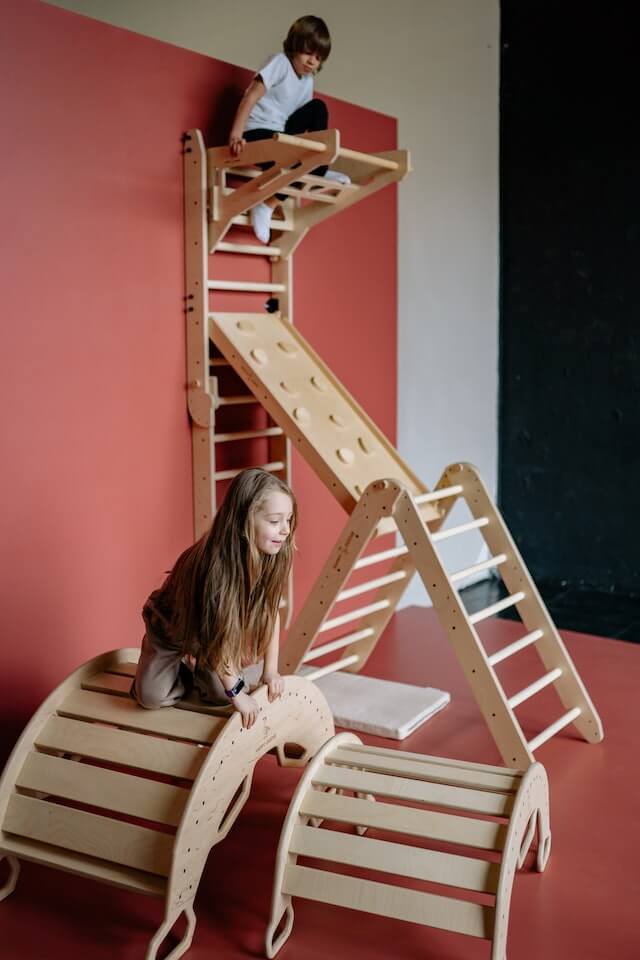Having a child in daycare can be a great way to connect with other moms. It might not happen immediately, but putting yourself in a position to allow it to occur can significantly help. Let’s discuss how you can create a supportive mom network by enrolling your child in daycare.
Sign Up For Social Media Pages
Some daycares have social media pages, so informing parents if they need to close is more accessible due to inclement weather. However, it can also double as a way to stay connected to other moms who bring their children to the same daycare. Feel free to interact in a friendly manner on the pages.
Say Hi When You See Other Moms
Sometimes all it takes to initiate a conversation with someone is a simple “hi.” Many go about their business and avoid as much social interaction as possible, but if you want to build a strong supportive network of moms, a greeting can be a great way to begin. Do not worry about feeling awkward saying hi to random strangers or acquaintances. It may help make you appear more friendly and approachable.
Offer to Help When You Can
One way to gain supportive friends is to be supportive of others. If you hear another mom needs help, do what you can to offer assistance. For example, if she is sick, you can bring food to her and the kids or offer to drive the children to school or daycare. Being there to help can encourage others to see the type of nice person you are and allow you to attract others to your friend group who have a similar way of being.
Introduce Yourself
It may seem intimidating to introduce yourself to one or more moms at daycare, but they cannot get to know you if they do not know who you are or only know you by face. You will not just stop another mom in the hallway to introduce yourself, so put yourself in a position where an introduction can happen. For example, if you see a mom standing by herself watching her children play, that can be a great time to make the approach and start up a conversation.
Linger Around When You Can
Moms are always busy with things to do, but if you want to make mom friends through the daycare, it is essential to try and linger around whenever you can. Make yourself present so you are in a position to meet the other parents. Consider going 10 minutes earlier at drop off and staying 10 minutes during pickup, even if it is a few times per week.
Be Open to Playdates
Finding time for playdates can be difficult, but it is excellent for the kids to interact socially. Consider the playdate a good opportunity to get better to know the other moms. Instead of dropping the child off (or vice versa) and going, hang out in an area, like at the park, where the both of you can keep an eye on the kids while conversing with each other.
Attend Activities and Events
Try to attend as many activities and events as possible at the daycare. It is a beautiful way to show your investment in your kid’s social activities and get a chance to get to know the other moms who attend. Ask the daycare during your first visit if there is a list of events available that parents are invited to so you can put the dates in your calendar and make arrangements to be able to go.
Do Not Talk Negatively

Gossiping is not how to build a supportive mom network at daycare or elsewhere. Avoid talking negatively about other people, even if another mom starts the conversation first. Stick to positive topics and discussions that are unlikely to result in a potential problem.
Offer Genuine Compliments
The world can certainly benefit from more kindness. Women who offer genuine compliments to other women have the potential to become supportive friends. Look for opportunities to compliment the other moms at daycare, such as if you like another mom’s outfit or you appreciate how their child showed kindness to your kids. Being friendly, especially when it is for no specific reason or seems to be of no benefit to you, can often be one of the best ways to start a friendship.
Lend an Ear
Moms sometimes need to vent to someone willing to listen and keep whatever they say confidential. Support among women – including between mothers – is so important. If you see a fellow daycare mom who seems upset, do not hesitate to ask if she is okay. You never know if you might be the only person asking and offering help. However, make sure whatever she says you do not repeat to others. Keeping that information private is essential to retaining the other person’s trust.
Making friends as an adult can feel intimidating, especially if you are new to the area, the daycare, or an introvert. You do not have to jump in all at once. Making easy little changes, such as spending 10 or 20 minutes hanging out at the daycare, can be a fantastic starting point that could help you develop a robust and supportive mom network.
Sandra Chiu works as Director at LadyBug & Friends Daycare and Preschool.


















